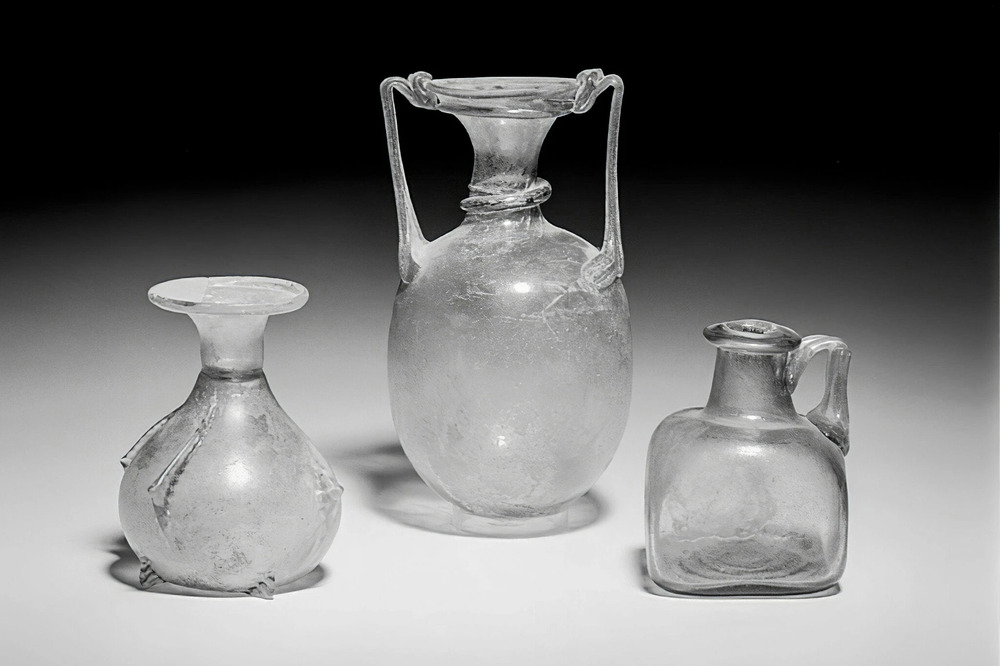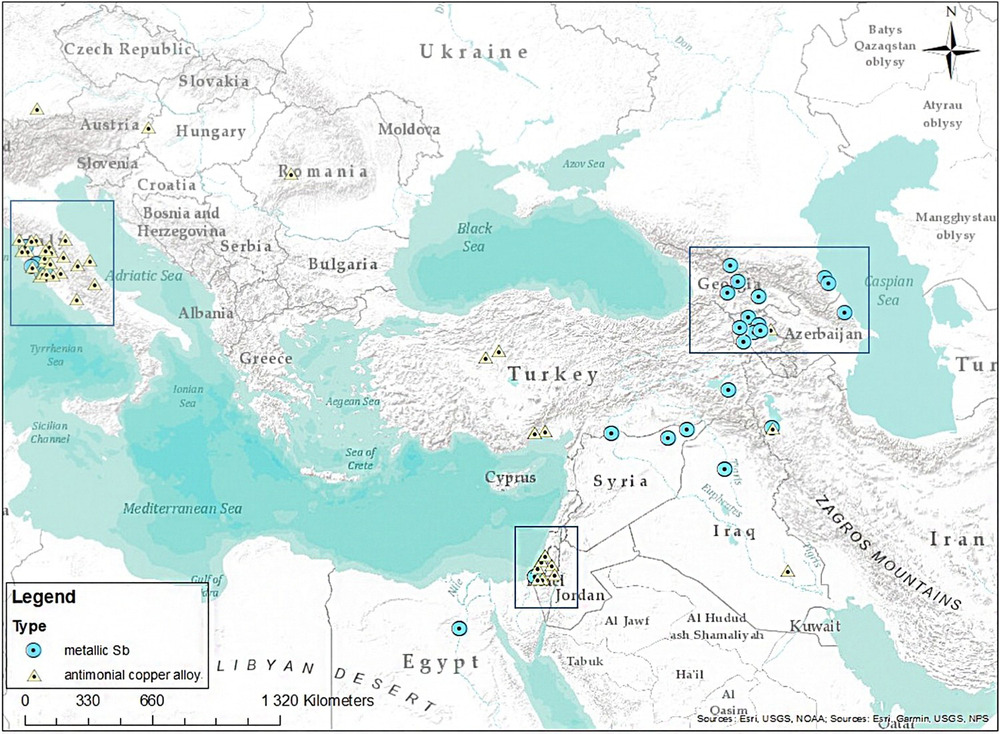Tau.Neutrino said:
The Romans Called it ‘Alexandrian Glass.’ Where Was It Really From?.
Trace quantities of isotopes hint at the true origin of a kind of glass that was highly prized in the Roman Empire
Glass was highly valued across the Roman Empire, particularly a colorless, transparent version that resembled rock crystal. But the source of this coveted material — known as Alexandrian glass — has long remained a mystery. Now, by studying trace quantities of the element hafnium within the glass, researchers have shown that this prized commodity really did originate in ancient Egypt.
more…
I like this type of glass, I thought this type of glass came later in Europe, nup, earlier.

Glass receptacles recovered from Egypt dating to the first or second century A.D., during the Roman occupation.
I thought it came later, too. I have heard vague rumours of clear glass in Roman times but have never seen any examples.
The discovery of clear glass kicked off the scientific revolution in Europe – the magnifying glass, telescope, microscope and prism spectrum, the chemical flask and test tube. So why this didn’t occur earlier becomes even more of a mystery.
> by studying trace quantities of the element hafnium within the glass, researchers have shown that this prized commodity really did originate in ancient Egypt.
> Between the first and ninth centuries A.D., Roman glassmakers in coastal regions of Egypt and the Levant filled furnaces with sand. The enormous slabs of glass they created tipped the scales at up to nearly 20 tons. That glass was then broken up and distributed to glass workshops, where it was remelted and shaped into final products.
> manganese, which reacts with iron impurities in sand … antimony made it completely crystal clear.
News to me. Where did they get antimony? Checking map of antimony resources.

> Diocletian in the early fourth century A.D. refers to this colorless glass as “Alexandrian”. … analyzed 37 fragments of glass excavated in northern Jordan. Hafnium is a trace element found in the mineral zircon, a component of sand. The zircon crystals within it are heavy, so they tend to settle out early in the journey on Egyptian beaches. That explains why glass forged in Egyptian furnaces tends to contain more hafnium than Levantine glass. The manganese-treated glass had hafnium properties consistent with being produced in the Levant, as expected. And Alexandrian glass, the clearest of the clear when it came to transparent glass, chemically resembled Egyptian.
:-)
Interesting that the Egyptian origin of this glass was traced using samples found in Jordan.
> Sb was not only used in metallurgy, but was also widely used in glass production, either as an opacifier (Sb content usually >1%) in coloured glass from the LBA onwards, or as decolouriser (around 0.5% Sb) from the Hellenistic period (fourth century BCE) onwards.
See also article Antimony as a raw material in ancient metal and glass making
> Since small amounts of Fe2O3 are usually unintentionally present as impurities in the sand raw material which results in a green–blue tint of the glass, a decolouriser is needed to obtain colourless glass. The colour can be neutralised by the addition of Mn or Sb by the oxidation of the Fe2+ to the practically colourless or weak yellowish Fe3+. Antimony levels in sand are typically at the ppm (or sub-ppm) level, and greater concentrations in glass indicate the deliberate addition of an antimony-bearing ingredient. The technology of use and provenance of the raw materials of antimonates are therefore vital to the understanding of the history of glass.